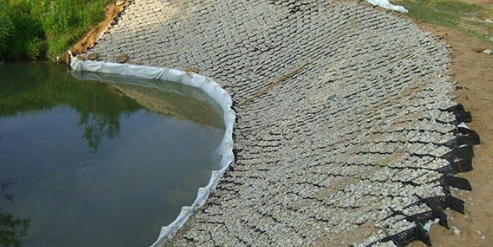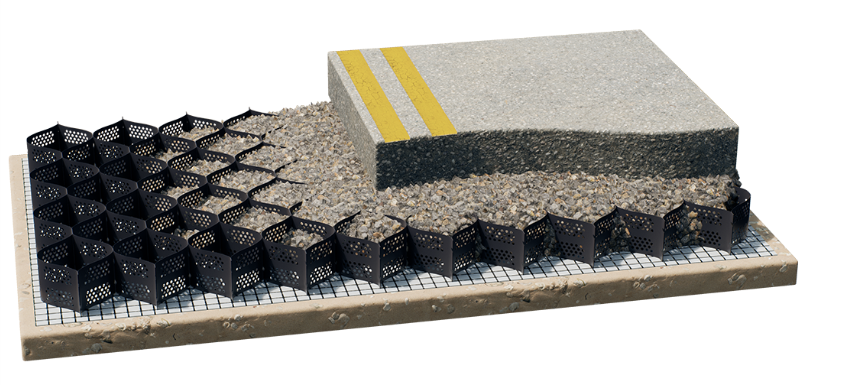- Understanding the Role of Geomembrane Liners in Waste Management
- Innovations in Geomembrane Liners for Water Management
- Geomembrane Liners: A Comprehensive Guide
- The Future of Geomembrane Liners in Civil Engineering
- Geomembrane Liners: Enhancing Landfill Stability
Manager:Alvin Wang
WhatsApp:+62 8983806051
Tel:+86 10-5797-1075
Email:steelwang@okorder.com
Address:3rd Floor, No.2 Building, No.1 Sanlihe Road
What are the characteristics of a Geocell?
Geocell slope protection has become a vital technique in civil engineering for stabilizing slopes and preventing erosion. Among the various methods employed, slope protection geocell stands out for its versatility and effectiveness. But what exactly are the characteristics that make geocells so suitable for slope protection applications? Let's delve into the key features of geocells and understand their significance in slope stabilization projects.

1. Structural Integrity
One of the fundamental characteristics of a geocell is its structural integrity. Geocells are typically made from high-density polyethylene (HDPE) material, which provides exceptional strength and durability. The interconnected cells form a robust structure that can withstand heavy loads and resist deformation. This structural integrity is crucial for supporting the weight of soil and vegetation on slopes, thereby preventing erosion and landslides.
2. Cellular Confinement
The unique feature of geocells lies in their cellular confinement system. These cells, when filled with soil, aggregate, or concrete, confine the material within, creating a stable matrix. In the context of slope protection, this confinement prevents soil erosion by locking the particles in place and reducing surface runoff. The confined material also experiences increased shear resistance, enhancing the overall stability of the slope.
3. Flexibility and Adaptability
Geocells offer unparalleled flexibility and adaptability in slope protection applications. They can be easily customized to fit the contours of varying terrain, making them suitable for irregular slopes and challenging landscapes. Additionally, geocells can accommodate different fill materials, allowing engineers to choose the most appropriate option based on site-specific requirements. This versatility enables geocell slope protection to be tailored to the unique needs of each project.
4. Permeability
Another important characteristic of geocells is their permeability. The open-cell structure allows for efficient drainage of water, preventing buildup and saturation of the soil. Proper drainage is essential for slope stability, as excess water can increase pore pressure and trigger slope failures. By promoting water infiltration and drainage, geocells help maintain the integrity of the slope and mitigate the risk of erosion.
5. Environmental Sustainability
Geocell slope protection aligns with principles of environmental sustainability. The use of geocells minimizes the need for traditional construction materials like concrete and steel, reducing the carbon footprint of slope stabilization projects. Furthermore, geocells support vegetation growth, allowing for the establishment of green slopes that enhance biodiversity and aesthetics. By providing a natural and eco-friendly solution to slope protection, geocells contribute to sustainable development practices.
6. Ease of Installation
Ease of installation is a significant advantage of geocell slope protection systems. Geocells are lightweight and modular, making them easy to transport and handle on-site. Installation typically involves unfolding the geocells, placing them on the slope surface, and filling them with the desired material. The simplicity of the installation process reduces construction time and labor costs, making geocells a cost-effective solution for slope stabilization projects.
7. Longevity and Maintenance
Geocells are designed for long-term performance and require minimal maintenance once installed. The durable HDPE material is resistant to corrosion, UV degradation, and chemical exposure, ensuring the integrity of the slope protection system over time. Additionally, the confined fill material within the geocells helps prevent erosion and soil loss, reducing the need for ongoing maintenance activities. This longevity and low maintenance requirement make geocell slope protection a sustainable and economical choice for slope stabilization.

Conclusion
In conclusion, the characteristics of a geocell make it an ideal solution for slope protection applications. From its structural integrity and cellular confinement system to its flexibility, permeability, and environmental sustainability, geocells offer a range of benefits that contribute to effective and long-lasting slope stabilization. By leveraging the unique features of geocells, engineers can mitigate the risks of erosion, landslides, and slope failures, ensuring the safety and stability of infrastructure projects in diverse landscapes."






